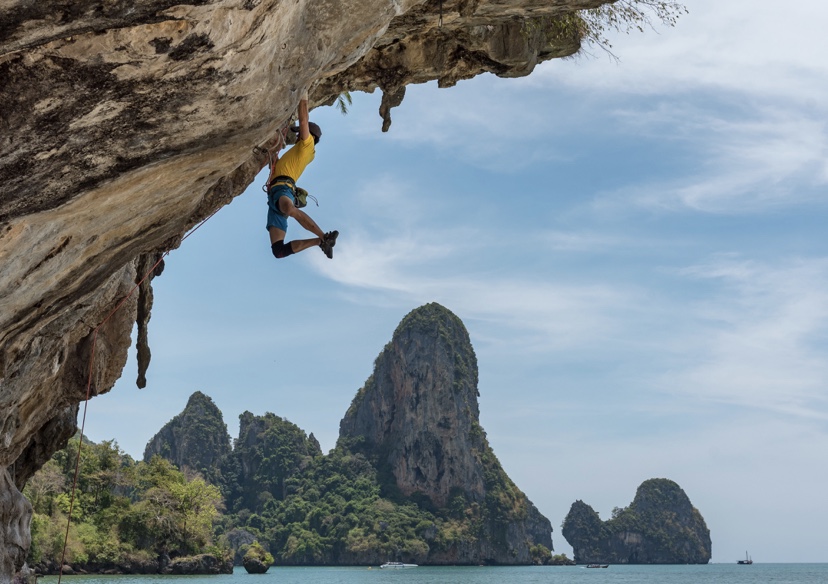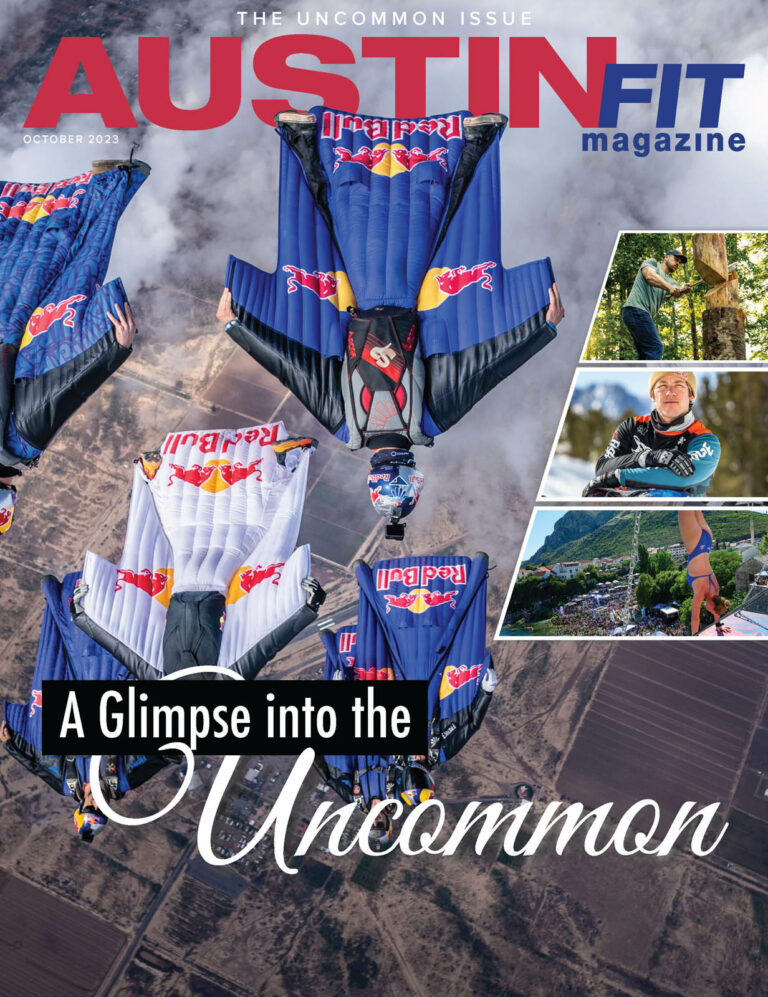The Mind of a Climber

Imagination, mindfulness and confidence are not commonly associated with strength and conditioning when training for a sport. However, Tonde Katiyo, director of route setting and coach at Bouldering Projects, says these skills are necessary aspects often overlooked in sports, particularly the climbing world.
“I think a common misconception is the interpretation of the sport as a physical test, but I would say it is 40 percent physical and 60 percent emotional,” Katiyo says. “There is a really important aspect of knowing who you are, how you deal with certain emotions, where your strengths and weaknesses are and then how to manage all of it in order to produce a high-quality performance.”
Unlike most sports, climbing poses a different challenge to an athlete each time they approach the wall, forcing the mind and body to constantly work together in a new way. Therefore, problem-solving and strategy as well as understanding emotions and how to overcome them are critical components needed in order to be a successful climber.
“Climbing is really cool because you cannot turn your brain off,” Katiyo says. “Yes, you need to be strong and flexible and limber, but just smashing through boulders if you are frustrated or cannot figure it out generally doesn’t go well.”
After climbing for over 30 years and being a route setter for 20 of those years, Katiyo continues to set routes for professional athletes, host training camps and work national events.
He describes what he does as creating movement.
“It’s like creating little puzzles on the wall that are unlocked by moving a certain way with certain intention,” Katiyo says. “Because my job is to create challenges for climbers, I have really narrowed down on precise, little things, and my mental game is stronger.”
With the understanding of performance and the emotions at play, Katiyo has learned how to create sequences of problems which reveal just how important a healthy mind is when climbing.
“In a sequence of four boulders, maybe the first problem will be designed to look at how a participant deals with frustration,” Katiyo says. “I can create movement that is annoying and slippery and requires a lot of focus and concentration.”
Katiyo says he might make the second problem less challenging, but because the climber is already in their head, the puzzle may seem harder to solve.
“My goal is not to beat them down, but to create a series of challenges that is going to reveal who the best climber is on a given day,” he says. “Them doing well is more than how strong they are, but on the contrary, being smart and aware of themselves and then making decisions accordingly.”
Christine Deyo, head setter at Austin Bouldering Project, says most mental challenges to climbing are tied with strength levels. As a climber advances in their abilities, the more mental challenges they will encounter.
Each mental skill required to be a successful climber falls into one of two components in mental strength, Deyo says. The first category focuses on the technical aspects of climbing.
“Skill acquisition and skill application starts with the decision-making process and problem-solving skills,” Deyo says. “It is not necessarily going to match what the other people around you may be doing, but it is more about learning to find a way forward that is unique to your current abilities.”
On the other side of mental strength is how people deal with emotions, or the internal focus of climbing, she says.
“The internal focus of climbing is very much a mental sport of learning to deal with failure or fear or even how to deal with success,” Deyo says. “Those mental skills, and being able to comfortably fail and learn from it or how to conquer fears you might have — all of that actually dictates the majority of climbers’ progress the more they are involved in the sport.”
Without the ability to overcome these types of mental barriers, Deyo says climbers will become limited in how they can grow as an athlete.
“You might be able to get stronger physically, but if you are never willing to try new things or work on what you are bad at or uncomfortable with, you are going to be very limited,” Deyo says. “You will be sort of like a one-sided climber, and climbing is so diverse and the movement styles are so wide. If you want to be a good climber, you have to be comfortable with all of it.”
Although a strong mind is important for athletes to excel in the world of climbing, Deyo says the aspect of a strong mind is not talked about much and is lagging behind all of the physical training done in climbing.
One of these reasons is because it is uncomfortable, says Katiyo.
“There is very little conversation and literature about this type of training, and one reason is because no one likes to delve into their fears or their weaknesses,” Katiyo says. “But that is effectively what you need to do to face a few truths and learn how to manage them so they don’t trip you up in the moment you are trying to perform.”
Dr. Julie Wiernik, owner of Texas Center for Sports Psychology and licensed clinical sports psychologist, trains athletes on how to control cognitions and provide themselves with energy-building thought processes.
“Sports and life kind of go hand in hand, and the biggest thing is really learning how to accept,” Wiernik says. “When people go through a loss in life, you have to look at it like a learning opportunity. In life and sports, learning is looking back on what you could have done differently.”
Wiernik teaches this to her athletes through an acronym she created called AIM. With this acronym, athletes learn to Accept the mistake, Improve on it and Move on.
Another idea many climbing athletes need to learn to accept is the idea of discomfort, Deyo says.
“The basis of mindfulness training is learning how to properly react in an uncomfortable situation,” Deyo says. “Climbing is not going to feel good. But you may surprise yourself when you are up on the wall, and you’re really tired, and instead of lingering on a thought, you just keep going.”
Deyo says being able to carry these skills has not only helped her on the wall but in life as well.
“Climbing has helped me a lot with knowing myself, problem-solving and conquering things that are uncomfortable,” she says.
Katiyo says that is the beauty of climbing — through the challenges it brings, it teaches you about who you are.
Ultimately, Dr. Wiernik concludes knowing yourself is the key to being a successful person and athlete.
“A strong athlete needs to know when they are distracted. They need to know their technique, and they also need to know their feelings,” Wiernik says. “Too often, we try to avoid those feelings instead of embracing them, but a strong athlete tends to have the ability to embrace those feelings, deal with them and focus on the moment.”
- austin bouldering
- austin climbing
- Climbing
- free climbing
- mental strength
- rock climbing
- rock climbing atx






